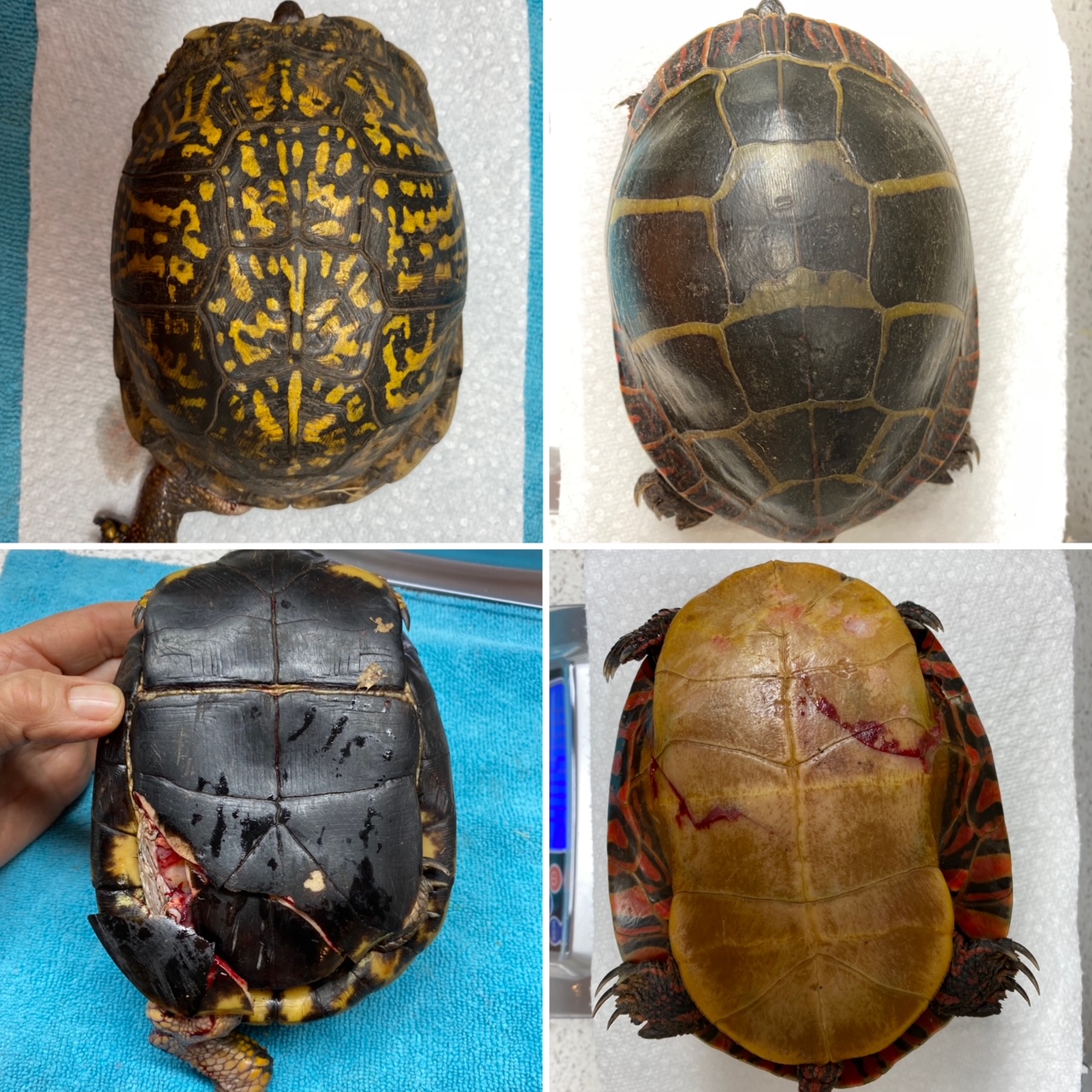Nesting season began yesterday. Triggered by a good rain followed by high temperatures, female turtles full of eggs started their annual mass exodus from wetland to nesting sites…and crossing roads in the process.
The two that arrived yesterday illustrate the danger of making assumptions when you find a turtle in the road. Neither one had any visible injury, viewed from the top. Both finders thought their turtles seemed fine. No shell fractures, no massive pools of blood around the animals. The painted turtle had its head pulled in, with a little blood visible on its nose. The box turtle was alert…just not moving. Both were gravely injured, and one didn’t make it.
A head that is firmly retracted, bulging eyes, a split beak and blood around the nose or mouth are classic signs of head trauma, and possibly a crushed skull. Although a turtle can move its legs for a long time while dying, a crushed skull is a death sentence. That was the case with this painted turtle.
And hiding beneath the perfectly healthy-looking box turtle was a plastron (bottom shell) with multiple fractures which had severed her hind leg. She’s in stable but guarded condition.
Both these turtles are carrying a full clutch of eggs. The painted turtle’s eggs can be extracted and incubated, but the box turtle’s will be difficult to manage, given her injury. So please, as you are out driving now:
- Stop to check every turtle in the road for possible injuries anywhere on its body. Help the uninjured cross to the side they’re headed toward, but always take the injured with you.
- Text clear photos to an experienced turtle rehabilitator, who can assess the situation and instruct you accordingly.
- Remember that even a dying or recently deceased turtle may be carrying eggs that can be saved; take it to a turtle rehabilitator.


